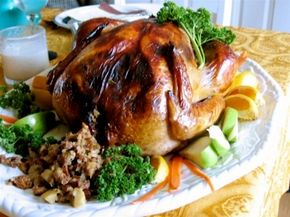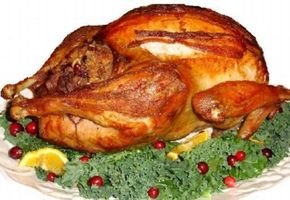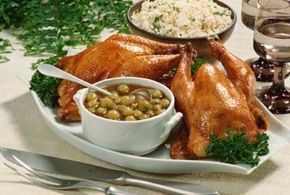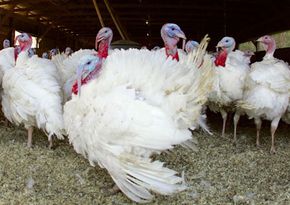The holidays and turkeys go hand in hand, but the yuletide season can be stressful enough without the added worry about what to make for that special holiday meal.
The pages in this article will help you with all your turkey preparation needs from questions about deep frying to tips on storage and carving.
Advertisement
If turkey is your main dish, check out the following pages for different ways to cook turkey, suggestions for new holiday menus, and what to do with leftovers:
Don't want to keep the oven all day baking a turkey? Why don't you take it outside and deep fry the turkey instead?
How to Store Thanksgiving Turkey
Too much bird and not enough room in the stomach? Don't leave it out. Follow these tips on storing turkey.
What to Make for Thanksgiving Dinner
Looking to upgrade your Thanksgiving menu? Check out these sure-fire ways to spice up your menu.
Do you know how long it will take to defrost a turkey? How big of a turkey should you buy? For the answers to these and other turkey questions, visit this site for some facts about turkey.
You've finished cooking the turkey. Now what? Cut to this site and learn how to carve that bird.
Keeping a Turkey at Room Temperature
Everyone has finished their first round. How long can you keep the turkey out for people to go for their second, third, or perhaps more, servings? Find out here.
Here are some basics on choosing, preparing, and cooking turkey. Learn all about this festive bird.
No bones about it. Boneless turkey makes defrosting and cooking all that much simpler. Be in the know when it comes to boneless turkey.
Tired of traditional turkey recipes? Get inspired for new spins on turkey with these sites:
- Turkey Recipes
- Turkey Gyros Recipe
- Tuxedo Turkey Recipe
- Turkey Fajitas Recipe
- Spirited Sweet Potato Casserole Recipe
- See all Food & Recipes articles //]]]]> ]]>
Advertisement







